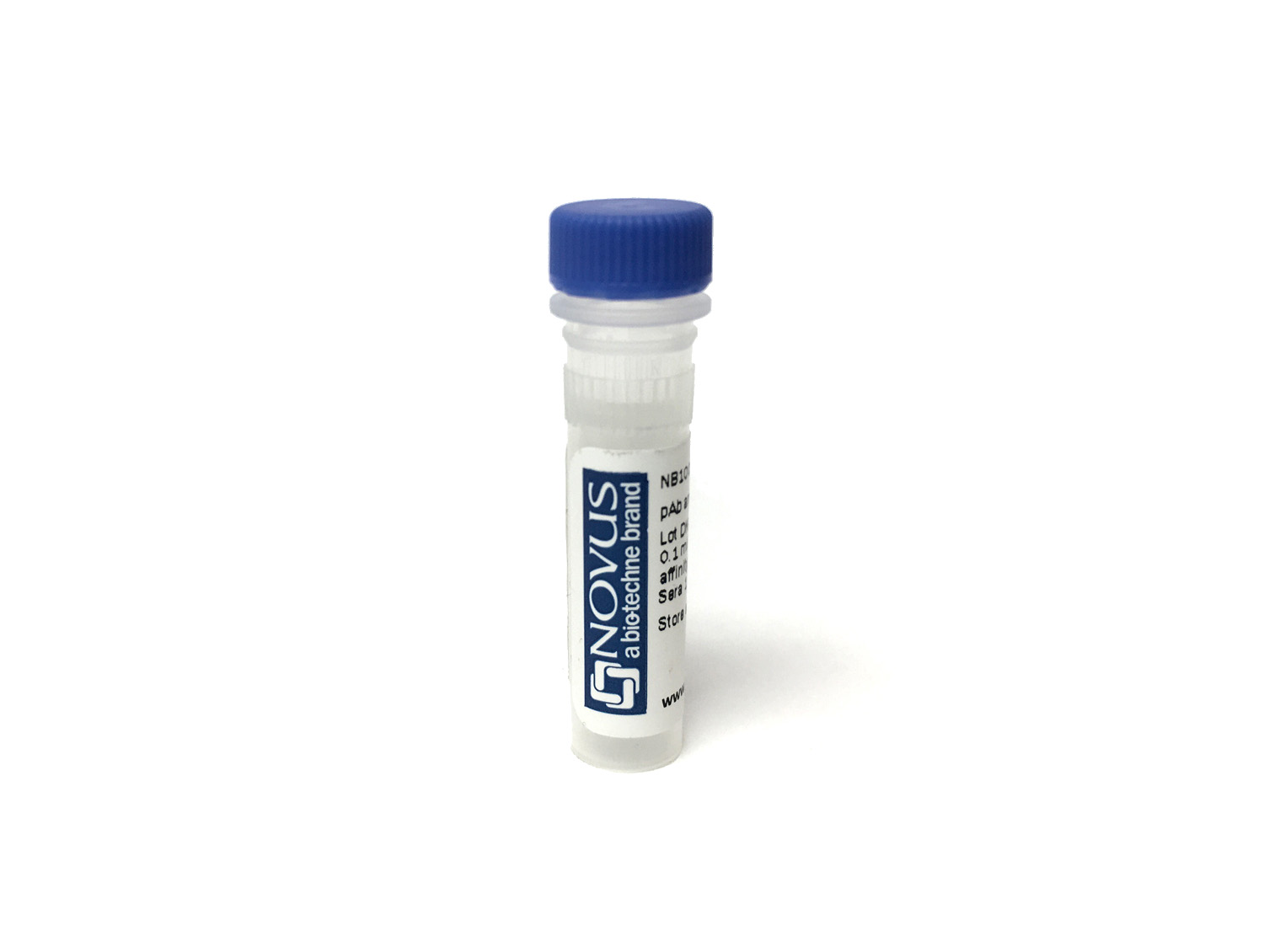Cytomegalovirus gB Antibody (hCMV34) [DyLight 550]
Novus Biologicals, part of Bio-Techne | Catalog # NB100-64532R


Conjugate
Catalog #
Key Product Details
Species Reactivity
Cytomegalovirus, Virus
Applications
ELISA, Immunocytochemistry/ Immunofluorescence, Immunohistochemistry, Immunohistochemistry-Frozen
Label
DyLight 550 (Excitation = 562 nm, Emission = 576 nm)
Antibody Source
Monoclonal Mouse IgG2A Clone # hCMV34
Concentration
Please see the vial label for concentration. If unlisted please contact technical services.
Product Specifications
Immunogen
Native cytomeglaovirus extracts from infected human cells.
Specificity
Recognizes cytomegalovirus glycoprotein B, a viral ligand for CD209 which allows capture of viral particles by dendritic cells. This does not react with HSV, VSV or EBV.
Clonality
Monoclonal
Host
Mouse
Isotype
IgG2A
Applications for Cytomegalovirus gB Antibody (hCMV34) [DyLight 550]
Application
Recommended Usage
ELISA
Optimal dilutions of this antibody should be experimentally determined.
Immunocytochemistry/ Immunofluorescence
Optimal dilutions of this antibody should be experimentally determined.
Immunohistochemistry
Optimal dilutions of this antibody should be experimentally determined.
Immunohistochemistry-Frozen
Optimal dilutions of this antibody should be experimentally determined.
Application Notes
Optimal dilution of this antibody should be experimentally determined.
Formulation, Preparation, and Storage
Purification
Protein G purified
Formulation
50mM Sodium Borate
Preservative
0.05% Sodium Azide
Concentration
Please see the vial label for concentration. If unlisted please contact technical services.
Shipping
The product is shipped with polar packs. Upon receipt, store it immediately at the temperature recommended below.
Stability & Storage
Store at 4C in the dark.
Background: Cytomegalovirus gB
Cytomegalovirus is a common virus, infecting ~60% of adults in developed countries and over 90% in developing countries, as indicated by presence of specific IgG antibodies (2-4). Although a majority of people infected remain asymptomatic, immunocompromised people, organ transplant recipients, and fetuses and newborns are more susceptible to HCMV-associated diseases (1-4). Annually, up to 2% of newborns are born with HCMV, making it the most common congenital infection (2-4). Cytomegalovirus is known to cause sensorineural hearing loss (SNHL), mental retardation, chorioretinitis, skin lesions, as well as end organ disease (3,5). There are a few CMV therapeutics approved by FDA including valganciclovir and letermovir; however, despite some benefits, there is the need for new antivirals and combination therapies (5). Potential new treatment options include monoclonal antibodies and sirtuins (5).
References
1. Connolly SA, Jardetzky TS, Longnecker R. The structural basis of herpesvirus entry. Nat Rev Microbiol. 2021;19(2):110-121. https://doi.org/10.1038/s41579-020-00448-w
2. Griffiths P, Reeves M. Pathogenesis of human cytomegalovirus in the immunocompromised host. Nat Rev Microbiol. 2021;19(12):759-773. https://doi.org/10.1038/s41579-021-00582-z
3. Krstanovic F, Britt WJ, Jonjic S, Brizic I. Cytomegalovirus Infection and Inflammation in Developing Brain. Viruses. 2021;13(6):1078. Published 2021 Jun 4. https://doi.org/10.3390/v13061078
4. Griffiths P, Baraniak I, Reeves M. The pathogenesis of human cytomegalovirus. J Pathol. 2015;235(2):288-297. https://doi.org/10.1002/path.4437
5. Acosta E, Bowlin T, Brooks J, et al. Advances in the Development of Therapeutics for Cytomegalovirus Infections. J Infect Dis. 2020;221(Suppl 1):S32-S44. https://doi.org/10.1093/infdis/jiz493
Alternate Names
CMV, CMV glycoprotein B, CMV glycoprotein GP55, Cytomegalovirus glycoprotein GP55, gB, Glycoprotein B, Glycoprotein GP55, HCMV, HCMV glycoprotein B, HCMV glycoprotein GP55, HHV 5 glycoprotein B, HHV 5 glycoprotein GP55, HHV5 glycoprotein B, HHV5 glycoprotein GP55, Human herpesvirus 5 glycoprotein B, Human herpesvirus 5 glycoprotein GP55, UL55
Additional Cytomegalovirus gB Products
Product Documents for Cytomegalovirus gB Antibody (hCMV34) [DyLight 550]
Product Specific Notices for Cytomegalovirus gB Antibody (hCMV34) [DyLight 550]
DyLight (R) is a trademark of Thermo Fisher Scientific Inc. and its subsidiaries.
This product is for research use only and is not approved for use in humans or in clinical diagnosis. Primary Antibodies are guaranteed for 1 year from date of receipt.
